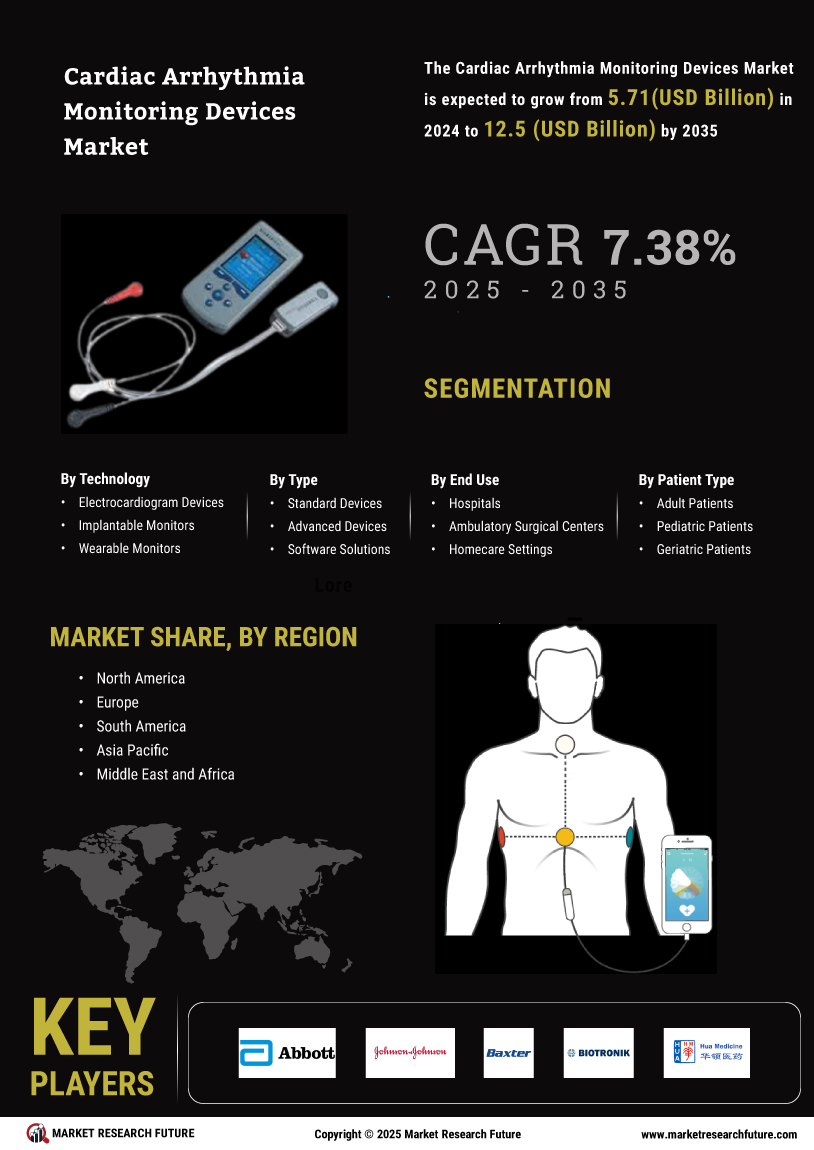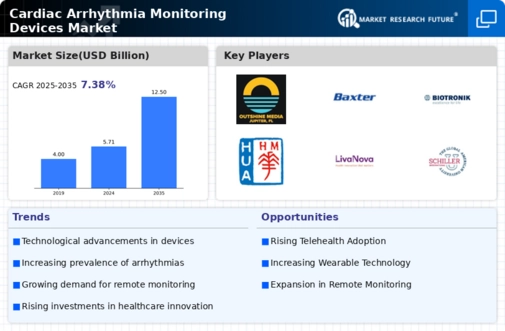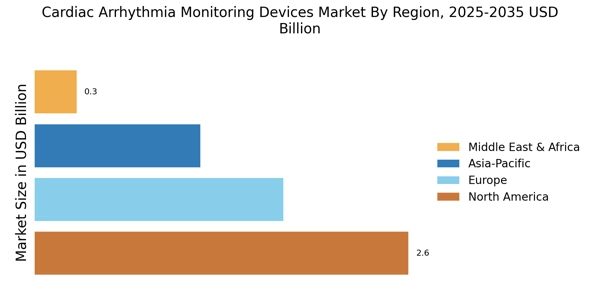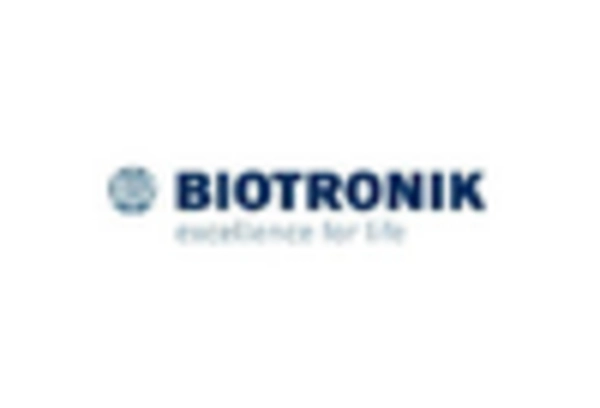Growing Geriatric Population
The expanding geriatric population is a significant driver of the Cardiac Arrhythmia Monitoring Devices Market. Older adults are at a higher risk of developing cardiac arrhythmias due to age-related physiological changes. As the global population ages, the demand for effective monitoring solutions is likely to increase. According to projections, the number of individuals aged 65 and older is expected to reach 1.5 billion by 2050. This demographic shift is prompting healthcare systems to adopt advanced monitoring devices to manage the health of older patients effectively. The need for continuous monitoring and timely intervention in this population is critical, thereby enhancing the market potential for cardiac arrhythmia monitoring devices. The Cardiac Arrhythmia Monitoring Devices Market is thus expected to experience robust growth as it addresses the unique needs of the aging population.
Government Initiatives and Support
Government initiatives aimed at improving cardiovascular health are playing a crucial role in the expansion of the Cardiac Arrhythmia Monitoring Devices Market. Various health organizations are implementing policies that promote the use of advanced monitoring technologies to enhance patient care. Funding for research and development in cardiac health technologies is increasing, which is likely to lead to the introduction of innovative monitoring devices. Additionally, regulatory bodies are streamlining the approval processes for new devices, facilitating quicker market entry. These supportive measures are expected to encourage manufacturers to invest in the development of next-generation monitoring solutions. As a result, the Cardiac Arrhythmia Monitoring Devices Market is poised for substantial growth, driven by both public and private sector efforts.
Increasing Prevalence of Cardiac Disorders
The rising incidence of cardiac disorders, including arrhythmias, is a primary driver for the Cardiac Arrhythmia Monitoring Devices Market. As the population ages, the prevalence of conditions such as atrial fibrillation and ventricular tachycardia is expected to escalate. According to recent data, approximately 2.7 to 6.1 million individuals in the United States are diagnosed with atrial fibrillation alone. This growing patient population necessitates advanced monitoring solutions, thereby propelling the demand for cardiac arrhythmia monitoring devices. Healthcare providers are increasingly adopting these devices to enhance patient outcomes and reduce hospital readmissions, which further stimulates market growth. The need for continuous monitoring and timely intervention is becoming more critical, indicating a robust future for the Cardiac Arrhythmia Monitoring Devices Market.
Rising Awareness and Education on Heart Health
There is a notable increase in awareness regarding heart health and the importance of early detection of arrhythmias, which is positively influencing the Cardiac Arrhythmia Monitoring Devices Market. Public health campaigns and educational initiatives are effectively informing individuals about the risks associated with cardiac disorders. As a result, more patients are seeking preventive measures and monitoring solutions. This heightened awareness is leading to an increase in consultations with healthcare providers, who are recommending the use of monitoring devices for at-risk populations. Furthermore, the emphasis on preventive healthcare is encouraging insurance companies to cover these devices, making them more accessible to patients. This trend is expected to sustain the growth trajectory of the Cardiac Arrhythmia Monitoring Devices Market in the coming years.
Technological Advancements in Monitoring Devices
Technological innovations are significantly transforming the Cardiac Arrhythmia Monitoring Devices Market. The introduction of advanced monitoring technologies, such as implantable loop recorders and mobile health applications, is enhancing the accuracy and efficiency of arrhythmia detection. These devices are equipped with sophisticated algorithms that facilitate real-time data analysis, enabling healthcare professionals to make informed decisions swiftly. The market is witnessing a surge in demand for devices that offer remote monitoring capabilities, allowing patients to manage their conditions from home. This shift towards telehealth solutions is expected to expand the market further, as it aligns with the growing preference for patient-centered care. The integration of advanced technologies is likely to improve patient compliance and engagement, thereby driving the Cardiac Arrhythmia Monitoring Devices Market.


















Leave a Comment